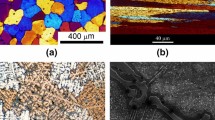Abstract
Many fields, such as medicine and biology, are producing an increasingly large volume using high-resolution digital imaging techniques, and this makes effective data analysis and visualization of these volumes more and more difficult. Volume reduction, decreasing the volume size, is one of the promising directions to solve this challenge for interactive volume visualization. In this paper, we present an automatic volume data reduction method called surface carving. It intelligently removes contextual voxels while preserving important features, and finally generates an optimal volume at the desired reduction size/rate. For large volume data sets, a multilevel banded method is introduced to gracefully overcome the memory limit and speed up volume reduction. We compare our technique with traditional cropping and scaling approaches and demonstrate the effectiveness and efficiency of our method with several volume data sets.












Similar content being viewed by others
References
Moser, M., Weiskopf, D.: Interactive volume rendering on mobile devices. In: Proceedings of Vision, Modeling, and Visualization VMV ’08 Conference, pp. 217–226 (2008)
Congote, J., Segura, A., Kabongo, L., Moreno, A., Posada, J., Ruiz, O.: Interactive visualization of volumetric data with webgl in real-time. In: Proceedings of the 16th International Conference on 3D Web Technology, Web3D ’11, pp. 137–146 (2011)
La Mar, E.C., Hamann, B., Joy, K.I.: Multiresolution techniques for interactive texture-based volume visualization. In: Proceedings of the 10th IEEE Visualization 1999 Conference, IEEE Computer Society, (1999)
Weiler, M., Westermann, R., Hansen, C., Zimmermann, K., Ertl, T.: Level-of-detail volume rendering via 3d textures. In: Proceedings of the 2000 IEEE symposium on Volume visualization, VVS ’00, ACM, New York, NY, USA (2000)
Bürger, K., Krüger, J., Westermann, R.: Direct volume editing. IEEE Trans. Vis. Comput. Graph. 14(6), 1388–1395 (2008)
Yuan, X., Zhang, N., Nguyen, M.X., Chen, B.: Volume cutout. Vis. Comput. 21(8–10), 745–754 (2005)
Zhao, Y., Clapworthy, G.J., Dong, F., Zhang, X., Chen, W., Viceconti, M.: Ivolbrush: an intelligent interactive tool for efficient volume selection and editing. In: Proceedings of the First International Conference on Intelligent Interactive Technologies and Multimedia, pp. 231–235 (2010)
Wiebel, A., Vos, F. M., Foerster, D., Hege, H.-C.: Wysiwyp: What you see is what you pick. IEEE Trans. Vis. Comput. Graph. 18(12), 2236–2244 (2012)
Giachetti, A. Guitin, J.A.I., Gobbetti, E.: Edge adaptive and energy preserving volume upscaling for high quality volume rendering. In: Eurographics Italian Chapter Conference’10, pp. 17–23 (2010)
Wang, Q., Tao, Y., Wang, C., Dong, F., Lin, H., Clapworthy, G.: Volume upscaling using local self examples for high quality volume visualization. In: Conference on Computer-Aided Design and Computer Graphics, (2013)
Westermann, R.: A multiresolution framework for volume rendering. In: Proceedings of the 1994 symposium on Volume visualization, pp. 51–58 (1994)
Agrawal, A., Kohout, J., Clapworthy, G.J., Mcfarlane, N.J., Dong, F., Viceconti, M., Taddei, F., Testi, D.: Enabling the interactive display of large medical volume datasets by multiresolution bricking. J. Supercomput. 51(1), 3–19 (2010)
Avidan, S., Shamir, A.: Seam carving for content-aware image resizing, ACM Transactions on Graphics, (Proceedings SIGGRAPH 2007) 26(3) (2007)
Rubinstein, M., Shamir, A., Avidan, S.: Improved seam carving for video retargeting. ACM Trans. Graph. 27(3), 16:1–16:9 (2008)
Viola, I., Kanitsar, A., Groller, M.E.: Importance-driven volume rendering. In: Proceedings of the conference on Visualization ’04, VIS ’04, pp. 139–146 (2004)
Wang, Y.-S., Wang, C., Lee, T.-Y., Ma, K.-L.: Feature-preserving volume data reduction and focus+context visualization. IEEE Trans. Vis. Comput. Graph. 17(2), 171–181 (2011)
Zhao, X., Zeng, W., Gu, X.D., Kaufman, A.E., Xu, W., Mueller, K.: Conformal magnifier: a focus+context technique with local shape preservation. IEEE Trans. Vis. Comput. Graph. 18(11), 1928–1941 (2012)
Kindlmann, G., Durkin, J.W.: Semi-automatic generation of transfer functions for direct volume rendering. In: Proceedings of the 1998 IEEE symposium on Volume visualization, VVS ’98, ACM, New York, NY, USA, (1998)
Boykov, Y., Kolmogorov, V.: An experimental comparison of min-cut/max- flow algorithms for energy minimization in vision. IEEE Trans. Pattern Anal. Mach. Intell. 26(9), 1124–1137 (2004)
Lombaert, H., Sun, Y., Grady, L., Xu, C.: A multilevel banded graph cuts method for fast image segmentation. In: Proceedings of the Tenth IEEE International Conference on Computer Vision, IEEE Computer Society, (2005)
Kohli, P., Torr, P.H.S.: Dynamic graph cuts for efficient inference in markov random fields. IEEE Trans. Pattern Anal. Mach. Intell. 29(12), 2079–2088 (2007)
Vineet, V., Narayanan, P.J.: Cuda cuts: Fast graph cuts on the gpu. In: Computer Vision and Pattern Recognition Workshops, 2008. CVPRW ’08. IEEE Computer Society Conference on, pp. 1–8 (2008)
Acknowledgments
The authors would like to thank the anonymous reviewers for their valuable comments. This work was partially supported by 863 Program Project 2012AA12A404, National Natural Science Foundation of China No. 61472354 and the Fundamental Research Funds for the Central Universities (2013QNA5010). The data sets are courtesy of Osirix DICOM, VolVis, and Siemens Medical Systems.
Author information
Authors and Affiliations
Corresponding author
Rights and permissions
About this article
Cite this article
Wang, Q., Tao, Y. & Lin, H. Surface carving-based automatic volume data reduction. Vis Comput 31, 1459–1470 (2015). https://doi.org/10.1007/s00371-014-1026-2
Published:
Issue Date:
DOI: https://doi.org/10.1007/s00371-014-1026-2




